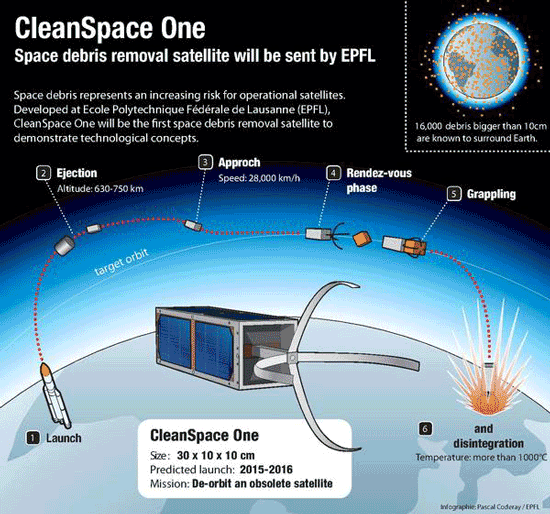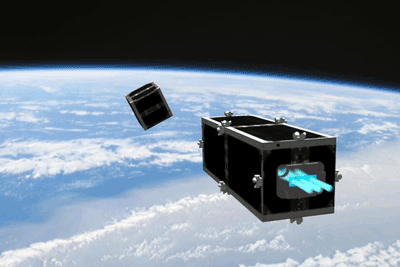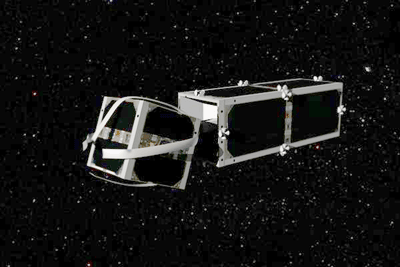Swiss to launch janitor satellite to clean up space
Satellite will be specially designed to get rid of space junk
The Swiss will stand neutral no more — on space’s growing debris problem, that is. They’re launching a program to build a janitor-like satellite that will head out to the final frontier and clean up after everyone’s mess.

How the Swiss plan to clean up Earth’s space junk problem.
The $11 million satellite (estimated), called “CleanSpace One,” will be the prototype for a future family of similar satellites. It’s being built the Swiss Space Center at the Swiss Federal Institute for Technology in Lausanne.
Earth’s space junk problem
Debris has long orbited the Earth. In fact, NASA says there are over 500,000 pieces of broken satellites, used rocket pieces, and other debris orbiting the earth right now, with some approaching speeds close to 17,500 miles per hour.
NASA keeps close tabs on at least 16,000 of these objects, all of which measure 10 cm or more in diameter. That’s because if they were to collide with an active satellite or spacecraft, they could inflict costly — and in some cases, debilitating — damage. What’s more, a collision would also result in thousands of more fragments entering the fray, only making Earth’s space junk situation worse.
The satellite’s technology problems
Before the Swiss can launch the satellite, there are three technology hurdles that they must overcome:
Once it’s been launched, the CleanSpace One satellite will need to adjust its trajectory in order to match its target’s orbital plane. To do this, it will have to use an ultra-compact motor specially designed for space applications. This motor is already being developed in EPFL laboratories.
After it’s in range of its target, CleanSpace One will need to grab and stabilize the object. This can be a little risky traveling at these high speeds, especially if the object is rotating. To accomplish this task, scientists will look to develop a gripping mechanism inspired from a plant or animal example.
Lastly, once it’s got the object and stabilized it, the CleanSpace One satellite will need to “de-orbit” the object and head back into the Earth’s atmosphere, where the two will disintegrate upon re-entry.
A visual of what was just described:

CleanSpace One satellite chasing target.

CleanSpace One’s bio-inspired gripping mechanism

With debris in tow, CleanSpace One now powers on its engines and turns toward the Earth’s atmosphere where, upon entry, both satellites will burn up during their descent.
The project’s first target will be either the Swisscube Picosatellite, Switzerland’s first orbiting object, which was put in orbit in 2009, or its cousin TIsat, which was launched in July 2010.
Outlook
As mentioned earlier, the first CleanSpace One satellite will be a model for a future family of similar satellites (which hopefully will not be as expensive to produce):
“We want to offer and sell a whole family of ready-made systems, designed as sustainably as possible, that are able to de-orbit several different kinds of satellites,” explains Swiss Space Center Director Volker Gass. “Space agencies are increasingly finding it necessary to take into consideration and prepare for the elimination of the stuff they’re sending into space. We want to be the pioneers in this area.”
Depending on funding and industrial partners, the team hopes to have their first satellite mopping up the space floor in three to five years. ■
Press release and images via: actu.epfl.ch/news/cleaning-up-earth-s-orbit-a-swiss-satellite-tackle
Advertisement
Learn more about Electronic Products Magazine





